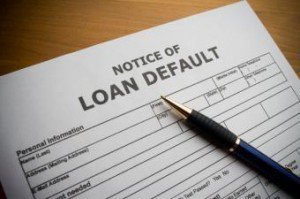 The UFA Default Risk Index, which measures the risk of default on newly originated nonprime mortgages, climbed seven points between Q4 2017 and Q1 2018, hitting 108. According to the latest UFA Mortgage Report released by University Financial Associates of Ann Arbor, Michigan, that means lenders should expect mortgage defaults to be 8 percent higher than the average of similar loans originated in the 1990s.
The UFA Default Risk Index, which measures the risk of default on newly originated nonprime mortgages, climbed seven points between Q4 2017 and Q1 2018, hitting 108. According to the latest UFA Mortgage Report released by University Financial Associates of Ann Arbor, Michigan, that means lenders should expect mortgage defaults to be 8 percent higher than the average of similar loans originated in the 1990s.
UFA bases their analysis on “constant-quality” loans, meaning loans with “the same borrower, loan, and collateral characteristics.” UFA releases the Default Risk Index on a quarterly basis, evaluating U.S. economic conditions and how they are likely to impact future default rates, as well as “prepayments, loss recoveries, and loan values for nonprime loans.”
“Overall default risks are similar to the prior quarter with favorable monetary conditions and falling unemployment rates offsetting the friction from higher house prices,” said Dennis Capozza, Professor Emeritus of Finance in the Ross School of Business at the University of Michigan, and a Founding Principal of UFA. “Continuing political uncertainty and a new Federal Reserve chairman provide the backdrop for future changes in mortgage risk levels. The Fed has indicated that more increases in interest rates should be expected this year.”

According to data released by the S&P/Experian Consumer Credit Default Indices last week, the default rate for first mortgages inched higher between December 2017 and January 2018, increasing from 0.68 percent to 0.72 percent. This put it exactly where it had been a year previously in January 2017.
How does this compare to mortgage delinquency rates? According to January mortgage performance data from Black Knight Inc., mortgage delinquencies dropped 8.6 percent between December and January but remained up year-over-year—1.6 percent higher than in January 2017. Black Knight also noted the ongoing impact of 2017’s hurricane season, with 146,000 loans in some stage of delinquency as a result of Hurricanes Harvey and Irma, 132,000 of which are now seriously delinquent.
Per Black Knight, the top 5 states in terms of 90+ days delinquent percentage were Florida (3.96 percent), Mississippi (3.37 percent), Louisiana (2.68 percent), Texas (2.33 percent), and Alabama (2.13 percent).

 DSNews The homepage of the servicing industry
DSNews The homepage of the servicing industry









